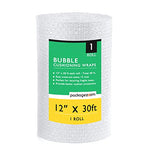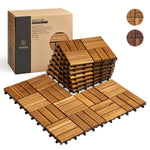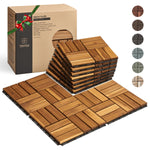You have no items in your shopping cart.
Kite flying is a popular pastime enjoyed by people of all ages around the world. It's a simple and fun activity that can be done in open fields, parks, or even on the beach. While there are many different types of kites available for purchase, making your own kite can be a rewarding and inexpensive option. In this tutorial, we'll show you how to make a kite using a common household item - a trash bag.
The trash bag kite is a classic design that has been around for years. It's a simple yet effective design that can be made with just a few basic materials. One of the great things about making a trash bag kite is that it's a fun activity for kids and adults alike. It's a great way to spend a sunny afternoon and can provide hours of entertainment.
Not only is making a trash bag kite a fun activity, but it's also a great way to upcycle and repurpose an item that would otherwise end up in the landfill. By using a trash bag, you're giving it a second life and reducing your environmental impact. It's a small but meaningful way to make a difference.
In this tutorial, we'll provide a step-by-step guide on how to make a trash bag kite, including tips on how to customize your kite and how to safely fly it. We'll also provide an analysis of the materials used and the environmental impact of kite making. So, grab a trash bag and let's get started!
Materials
- A large trash bag
- A wooden dowel or bamboo stick
- String
- Scissors
- Tape
- Streamers (optional)
Step 1: Cut the trash bag into the kite shape
Cutting the trash bag into the kite shape is an important step, and it's essential to take your time with it. If you rush through this step, you may end up with an uneven kite, which won't fly as well. When cutting the trash bag, try to keep the diamond shape as symmetrical as possible. You can use a ruler to help guide your cuts and make sure that the angles are even.
Step 2: Create the frame of the kite
When it comes to choosing a wooden dowel or bamboo stick for your kite frame, it's important to consider the weight and strength of the material. A wooden dowel is a good choice for a sturdy frame, while a bamboo stick is a lightweight option that can be easier to handle. Keep in mind that the frame needs to be strong enough to withstand the wind, but not so heavy that it weighs the kite down.
Step 3: Add the crossbar
Adding the crossbar to the kite helps to give it stability and shape. This stick runs perpendicular to the main stick and is positioned in the center of the kite. When attaching the crossbar to the main stick, be sure to use enough tape to keep it secure. If the crossbar is not attached properly, the kite may not fly straight.
Step 4: Create the tail
The tail is an important part of the kite as it helps to balance it in the wind. Without a tail, the kite may spin or dive uncontrollably. When choosing streamers for your tail, you can use a variety of materials, such as ribbon or crepe paper. Make sure to tie the streamers securely to the string so that they don't fall off during flight.
Step 5: Add the flying string
The flying string is what you will use to control the kite in the air. When tying the string to the kite, be sure to tie it securely to both the horizontal and vertical sticks. It's important to use a strong string that can handle the weight of the kite and the wind. Nylon string is a good option as it is durable and strong.
Step 6: Decorate the kite (optional)
Decorating the kite is a fun and creative way to personalize it. You can use markers, stickers, or even paint to add your own unique design. When decorating the kite, be sure to use materials that are lightweight and won't weigh the kite down. You can also use materials that will add to the tail, such as ribbon or strips of tissue paper.
Step 7: Test the kite
Once you have completed all of the steps, it's time to test the kite. Take your kite to an open area with plenty of wind, such as a park or beach. Make sure the string is untangled and hold the kite by the flying string. With a gentle toss, the kite should catch the wind and begin to soar. If the kite doesn't fly right away, adjust the tail or string until it catches the wind.
In addition to the steps above, it's important to practice kite safety. Never fly a kite near power lines or in a crowded area. Always be aware of your surroundings and be sure to follow local regulations regarding kite flying. With a little practice and patience, you'll soon be a pro at flying your trash bag kite!
Choosing the right location to fly your kite:
When it comes to kite flying, location is key. You want to choose an open area with plenty of space to run and launch your kite. A large field or beach is ideal, but make sure to stay away from power lines, trees, and other obstacles that could damage your kite or cause harm.
It's also important to consider wind conditions. Look for a location with a steady, moderate wind, as this will provide the best conditions for flying your kite.
Tips for customizing your trash bag kite:
While the basic design of a trash bag kite is simple, there are many ways to add your own personal touch and make it unique. One option is to decorate your kite with markers or paint. You can also add ribbons, streamers, or other decorative elements to the tail of your kite.
Another option is to experiment with different shapes and sizes of kites. By making slight adjustments to the design, you can create a kite that flies in a specific way or performs certain tricks.
Safety precautions to keep in mind when flying your kite:
Kite flying is generally a safe activity, but it's important to take some basic precautions to ensure your safety and the safety of others. Always be aware of your surroundings and make sure to fly your kite in an open area away from people, buildings, and power lines.
Never fly your kite during a thunderstorm or in high winds that could cause the kite to become uncontrollable. If you're flying near others, make sure to give them plenty of space to avoid collisions.
The history and cultural significance of kite flying:
Kite flying has a long and rich history, dating back thousands of years to ancient China. Over time, kite flying has evolved into a popular pastime enjoyed by people around the world. In some cultures, kite flying is deeply rooted in tradition and holds symbolic meaning.
For example, in Thailand, kite fighting is a popular activity during the annual kite festival, where competitors try to cut down each other's kites using razor-sharp strings.
How to repair a damaged kite
If your kite becomes damaged during a flight, don't worry - it's usually easy to repair. One of the most common issues is a torn or frayed tail, which can be fixed by simply tying on a new ribbon or streamer. If the kite itself becomes torn or damaged, you can patch it up using clear packing tape or duct tape.
It's important to address any damage as soon as possible, as small tears can quickly turn into larger ones if left untreated.
Conclusion
Making a trash bag kite is a fun and easy way to spend a sunny afternoon, while also contributing to a more sustainable future. By repurposing a common household item, we can reduce our environmental impact and create something beautiful and entertaining.
As we have discussed in this tutorial, making a trash bag kite requires only a few basic materials and can be customized to fit your own personal style. However, it's important to remember to fly your kite safely and responsibly, taking into consideration weather conditions and the location of other people and objects.
Through the process of creating a kite, we also gain a deeper appreciation for the materials we use and their potential for reuse. By upcycling and repurposing, we can reduce waste and promote a more circular economy.
In addition to the environmental benefits, making a trash bag kite can also be a great opportunity for bonding with friends and family. Kite flying is a timeless activity that brings joy and laughter to people of all ages.
Overall, making a trash bag kite is a fun, easy, and sustainable way to enjoy the outdoors and create something beautiful. So, next time you're looking for a fun activity, grab a trash bag and give kite making a try!








